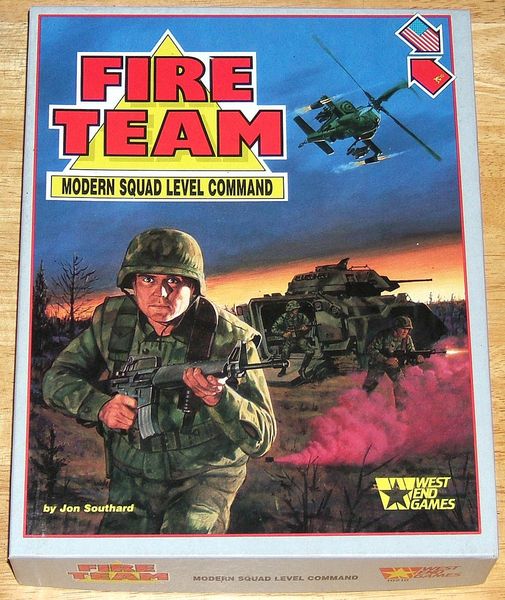Fire Team (1987) Board Game
Fire Team is a board game that was released in 1987 by designers Stephen Crane, Diane Malz, and Kevin Wilkins. It is a modern warfare wargame that is played by two players. The game features a chit-pull system, action points, dice rolling, grid movement, and a hexagon grid. The artwork for Fire Team was done by West End Games.
Game Components of Fire Team
How To Setup Fire Team
To set up Fire Team, players first select a scenario from the provided booklets, which defines the initial deployment of units, leaders, and any specific rules or conditions for that scenario. The map boards are then arranged according to the scenario, and units and leaders are placed on the board as specified. Each player receives a set of Command Point tokens and Tactical Event Cards. The game state is finalized by determining the starting leader status and command radius, which will influence the generation of Command Points throughout the game.
Gameplay Mechanics and Game Objective
Gameplay Mechanics
Game Objective
The objective is to achieve the scenario-specific goals, which could include securing key terrain, eliminating enemy units, or completing specific missions. The game simulates the intense and chaotic nature of squad-level combat, focusing on realistic tactical situations.
Player Experience
Playing Fire Team immerges players in the intense and unpredictable world of squad-level combat during the Cold War. The game’s mechanics, such as the random chit draw and tactical event cards, create a high level of tension and realism. Players must manage their Command Points effectively and adapt to the dynamic battlefield, making it a challenging yet rewarding experience. The variability in scenarios and the inclusion of different tactical situations ensure a high replay value.
Pros
Cons
Personal Thoughts on Fire Team
Fire Team is ideal for fans of tactical wargames who appreciate historical accuracy and realistic combat simulations. It is particularly suited for those interested in the Cold War era and squad-level combat. The game’s complexity and depth make it more appealing to experienced wargamers, but its unique mechanics and historical setting can also attract new players looking for a challenging and immersive experience.
We are supported by our audience. When you purchase through links on our site, we may earn an affiliate commission, at no extra cost for you. Learn more.

